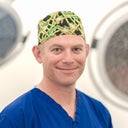after my last c-section i noticed my stomach always sticks out to the point where i look about 3 months pregnant. As it turns out, my muscles are split from the top of my stomach to my incision scar. It is really uncomfortable and my insides feel sore at times. It also seems like i may have a herniated belly button. At what point is it necessary to have surgery to fix this?
Answers (32)
From board-certified doctors and trusted medical professionals
Dr. Andrew P. Trussler, MD

Dr. Andrew P. Trussler, MD
Board Certified Plastic Surgeon
Answer
Dr. Leila Kasrai, MD, FRCSC

Dr. Leila Kasrai, MD, FRCSC
Certified Plastic Surgeon
Answer
Dr. Farbod Esmailian, MD

Dr. Farbod Esmailian, MD
Board Certified Plastic Surgeon
Answer
Dr. Mark Baldwin, MBBS

Dr. Mark Baldwin, MBBS
Specialist Plastic Surgeon
Answer
Dr. Jerome Edelstein, MD

Dr. Jerome Edelstein, MD
Certified Plastic Surgeon
Answer
Dr. J. Timothy Katzen, MD, FACS

Dr. J. Timothy Katzen, MD, FACS
Board Certified Plastic Surgeon
Answer
Dr. Michelle Spring, MD, FACS

Dr. Michelle Spring, MD, FACS
Board Certified Plastic Surgeon
Answer
Dr. Rob Winterton, MPhil, FRCS(Plast)

Dr. Rob Winterton, MPhil, FRCS(Plast)
Specialist Registered Plastic Surgeon
Answer
Dr. Young R. Cho, MD, PhD

Dr. Young R. Cho, MD, PhD
Board Certified Plastic Surgeon
Answer
Dr. John Paul Tutela, MD

Dr. John Paul Tutela, MD
Board Certified Plastic Surgeon
Answer
Dr. Joshua D. Zuckerman, MD, FACS

Dr. Joshua D. Zuckerman, MD, FACS
Board Certified Plastic Surgeon
Answer
More Tummy Tuck Questions
See all Tummy Tuck Q&AWE SEND PRETTY
EMAILS
What’s trending? Who’s turning heads? Which TikTok myths need busting? We’ve got you. No fluff, no gatekeeping—just real talk. Get our free, unfiltered newsletter.